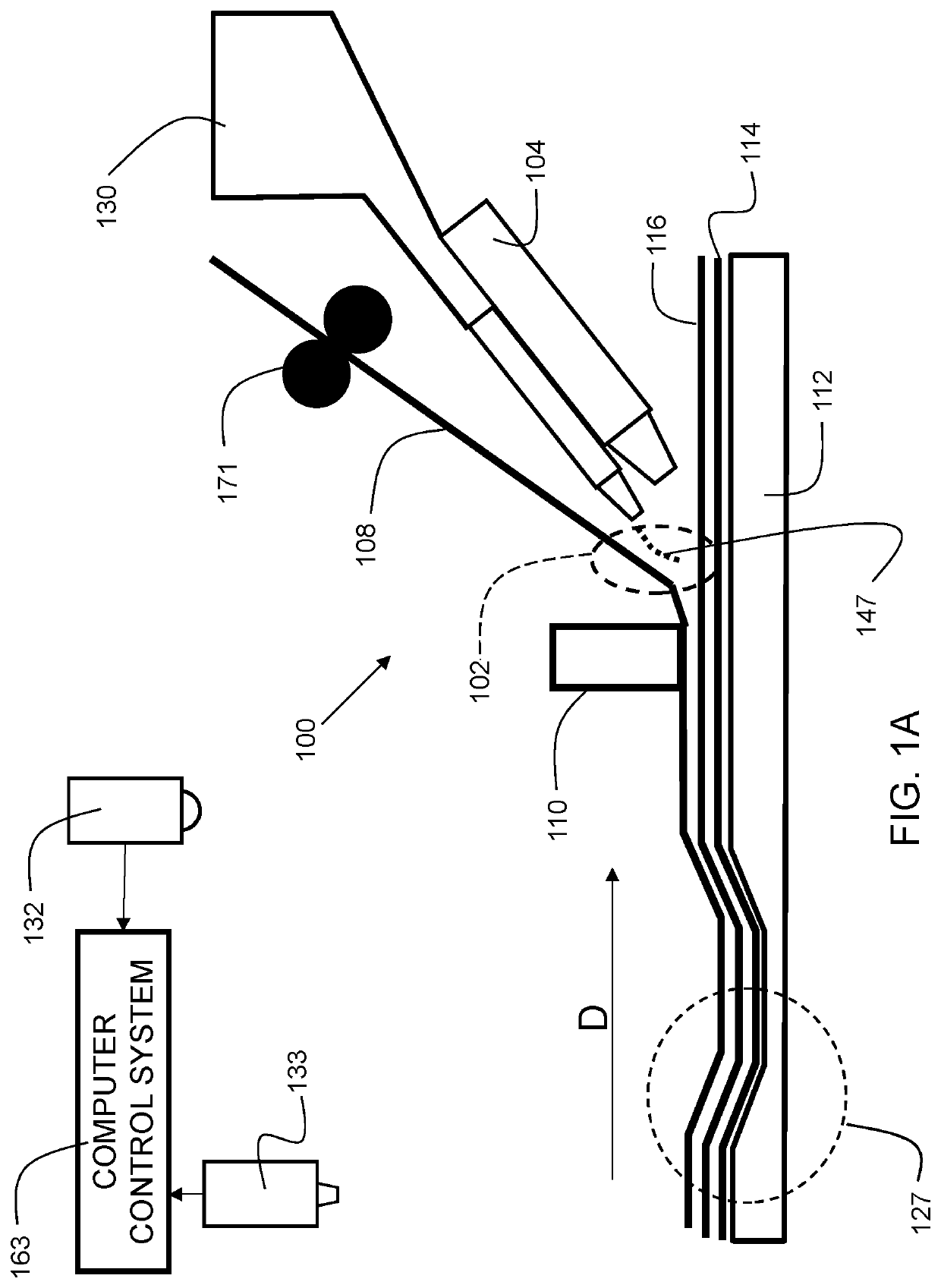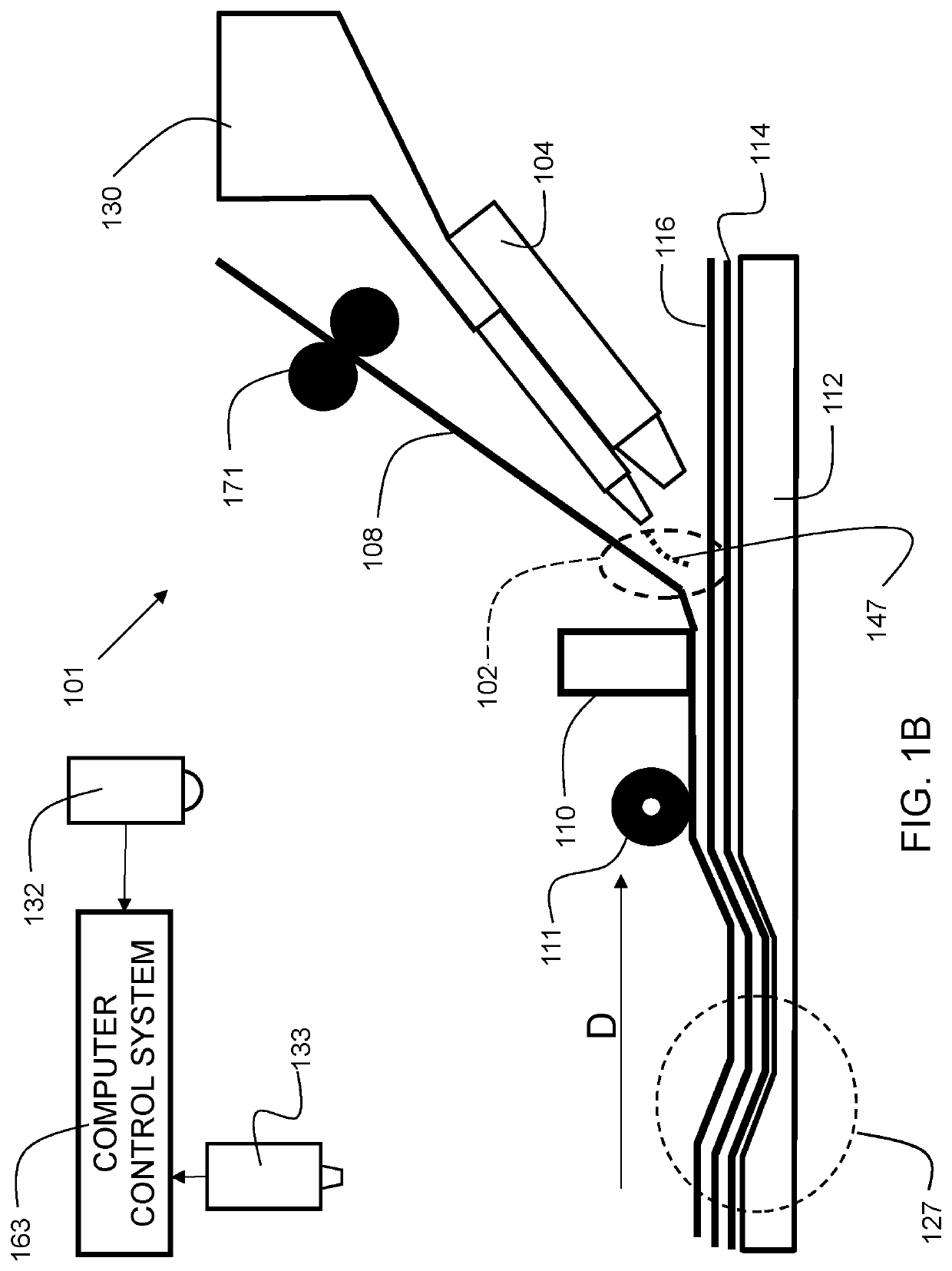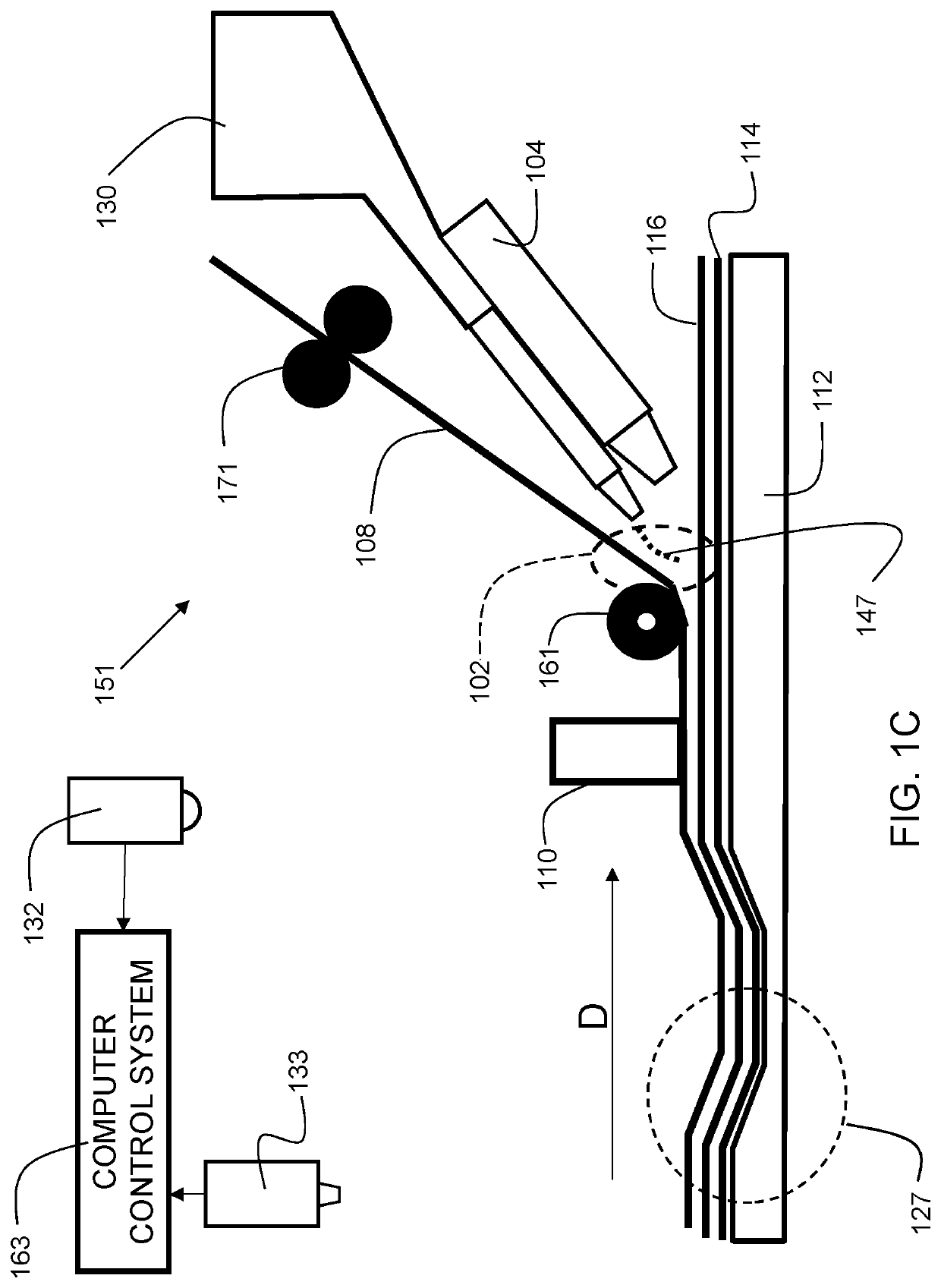Impact forming of thermoplastic composites
a technology of thermoplastic composites and impact forming, which is applied in the direction of liquid surface applicators, coatings, layered products, etc., can solve the problems of warpage of materials, adversely affecting the integrity of thermoplastic composite materials, etc., and achieves improved fuel economy, reduced weight of thermoplastic composite parts, and increased performance
- Summary
- Abstract
- Description
- Claims
- Application Information
AI Technical Summary
Benefits of technology
Problems solved by technology
Method used
Image
Examples
Embodiment Construction
[0025]Disclosed embodiments provide automated fiber placement techniques for fabrication of parts made from composite materials. In some embodiments, tape plies are wound around a mandrel while, optionally, a polymer is dispensed on a tape ply shortly before compaction. A peening system with multiple pins provides compaction over irregular surfaces, providing superior performance as compared with traditional compaction rollers.
[0026]Reference throughout this specification to “one embodiment,”“an embodiment,”“some embodiments”, or similar language means that a particular feature, structure, or characteristic described in connection with the embodiment is included in at least one embodiment of the present invention. Thus, appearances of the phrases “in one embodiment,”“in an embodiment,”“in some embodiments”, and similar language throughout this specification may, but do not necessarily, all refer to the same embodiment.
[0027]Moreover, the described features, structures, or characteri...
PUM
| Property | Measurement | Unit |
|---|---|---|
| Frequency | aaaaa | aaaaa |
| impact pressure | aaaaa | aaaaa |
| glass transition temperature | aaaaa | aaaaa |
Abstract
Description
Claims
Application Information
 Login to View More
Login to View More - R&D
- Intellectual Property
- Life Sciences
- Materials
- Tech Scout
- Unparalleled Data Quality
- Higher Quality Content
- 60% Fewer Hallucinations
Browse by: Latest US Patents, China's latest patents, Technical Efficacy Thesaurus, Application Domain, Technology Topic, Popular Technical Reports.
© 2025 PatSnap. All rights reserved.Legal|Privacy policy|Modern Slavery Act Transparency Statement|Sitemap|About US| Contact US: help@patsnap.com



